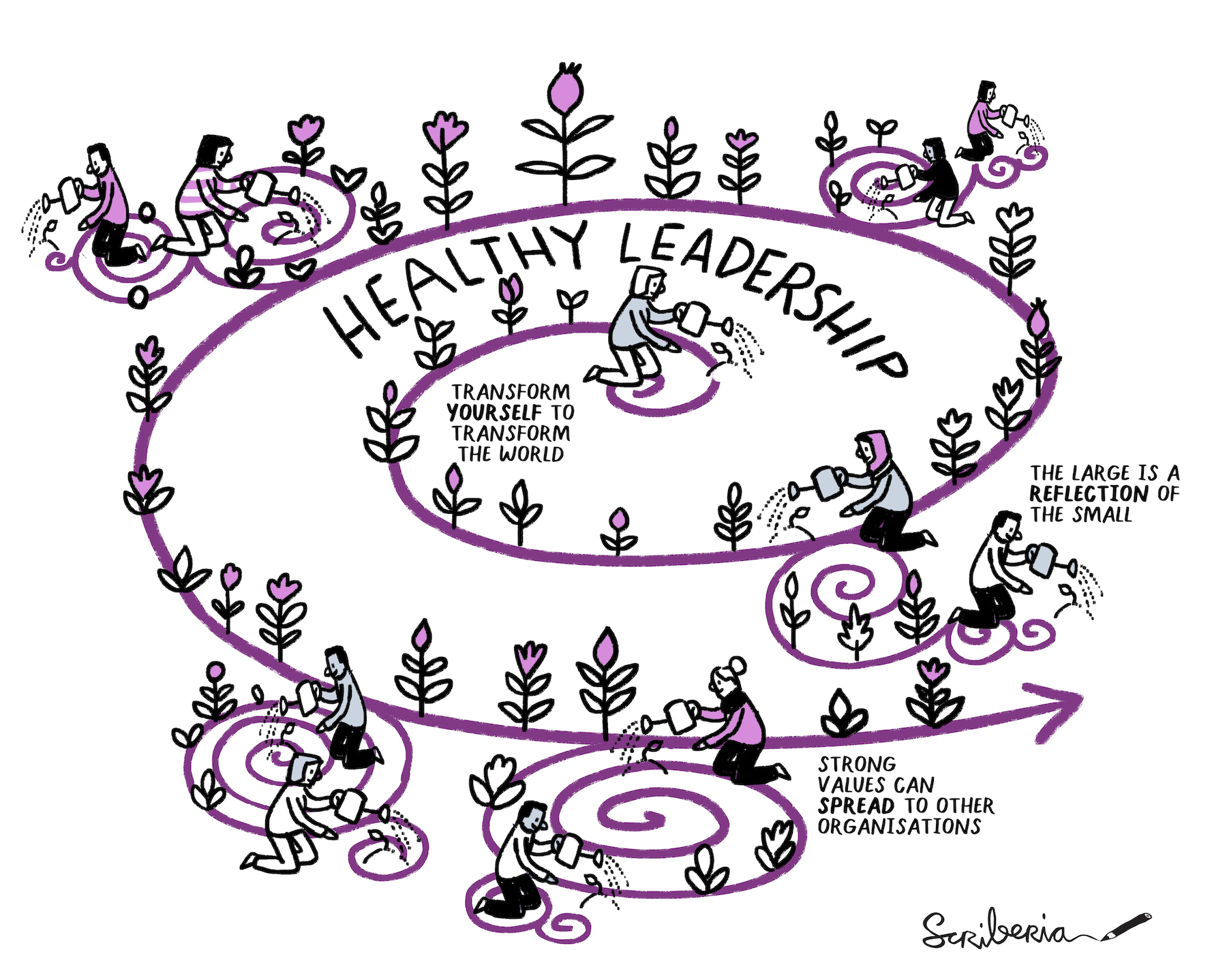Open and Healthy Leadership
Contents
Open and Healthy Leadership¶
Our favorite leadership kind is open and healthy.
Open leadership is “a set of principles, practices, and skills people can use to mobilize their communities to solve shared problems and achieve shared goals” (See Mozilla Open Leadership framework).
By healthy leadership, we mean guidance that stewards a community, project, or organization where everyone feels safe, welcome, and valued.

Fig. 90 Illustration of Health Leadership by Scriberia. Zenodo. https://doi.org/10.5281/zenodo.4323154¶
Open Leadership Framework¶
Mozilla’s Open Leadership Framework states that leadership is about involving members and mobilizing communities to solve problems and achieve goals that are beneficial for everyone.
Individuals who lead their work (project, organization, communication, resources) openly design different aspects of their work to promote openness and social good throughout their work life cycle.
The key principles of openness are: design, build, and empower for understanding, sharing, and participation and inclusion.
Design: You plan projects for contributors and users’ specific needs and capacities.
Build: You create systems and solutions that maximize a project’s clarity, usability, and inclusiveness.
Empower: You help contributors own the work through transparency, accountability, and shared decision-making.
The emphasis is on ensuring that the members of an open project understand the project so well that the project can run without leaders because all the members are empowered to take on leadership tasks.
The Turing Way is built upon Open Leadership principles, which involve and support its members to apply these principles when developing content for its book or supporting its community.
More about Mozilla’s Open Leadership Framework can be read online here.
Aspects of Healthy Leadership¶
Not all leaderships can be open, but they can apply most of the open leadership principles to build heatlh leadership stewarding a healthy community which aims to involve and empower its members.
The following are some aspects that contribute to building healthy leadership.
Leading by example: Leaders are the first to start doing what needs to be done and give others space to follow and work alongside them rather than telling others what to do.
Selflessness: Healthy leadership prioritizes the greatest good for most, even when it goes against their benefit.
Consensus: Leaders act on as much consensus as possible, even when the they do not agree with the decision of most. This aspect requires explaining how decisions are made. Sometimes it will require that leaders reach out personally to the people who were left out of the consensus to understand the whole picture best and achieve at the best decision for the maximum number of persons.
Transparency and accountability: Healthy leadership makes decisions as transparent as possible and requires to be accountable to the people led.
Inside out knowledge of projects: Deep knowledge of the organization, team, or project they lead is integral to healthy leadership.
To avoid arbitrary decision making, one must be familiar with the whole entity that they lead.Open mindset: Healthy leadership keeps an open mind to avoid personal biases and listens to everyone to learn about changes and transformations as time goes by. This is particularly important when leading a large project and they necessarily grew apart from some aspects of an organization or project.
Trust: Healthy leadership trusts people around them and is very good at identifying the best fit for different roles, sometimes even before the person themselves.
Diversity: Globally-diverse teams hugely strengthen data science projects. The most empathic and effective leaders are often persons from marginalized communities. Good leaders have an open mind to cultural differences and are welcoming and inclusive to everyone in their team. Being welcoming and inclusive is challenging because it varies a lot by culture and personality. Being kind, examining assumptions, and keeping an open mind to learn from the variability that enriches teams are essential to be a good leader. None in a team, group, organization, or event should have to speak too loudly to get their message across.
Delegating and trusting others. Leaders are to lead by example, but they will be unable to do everything and should not do everything either. When a leader is in charge of too many aspects of a project they will become a bottleneck. Developing trust and delegating crucial and meaningful tasks allows leaders to nurture healthy leadership.
Renewal: The same person leading the same project for long periods is the source of several problems. Human relationships are complicated, and leaders must make consensual decisions with which not everyone will agree. Governance mandating for good leadership renewal results in the long-term good health of projects.
Allyship: A leading position comes with some dimensions of privilege. Privileged persons can be allies to those without those privileges. Thus, healthy leadership will have a vital component of allyship work. Frameshift Consulting is the leader in allyship skill training and shares several helpful resources to learn more about this aspect of heathly leadership.
